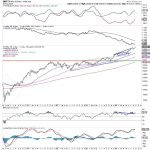In a rapidly evolving market landscape, the technology sector often experiences high volatility, leading to fluctuations in stock prices. Nvidia Corporation (NVDA), a prominent player in the semiconductor industry, is a prime example of a company that has witnessed both booms and downturns in its stock value over the years. The recent dip in NVDA’s share price has prompted investors to question whether now is a good time to capitalize on the opportunity and buy the dip.
Understanding the reasons behind NVDA’s stock decline is crucial in deciding whether purchasing the dip is a strategic move. Several factors contribute to the fluctuations in NVDA’s stock price, including broader market conditions, company-specific developments, and industry trends. For instance, recent market uncertainties or negative company news can trigger a downward trend in NVDA’s stock value, presenting a buying opportunity for investors seeking long-term gains.
It is essential for investors to conduct a thorough analysis of NVDA’s fundamentals before deciding to buy the dip. Examining the company’s financial health, growth prospects, competitive positioning, and industry outlook can provide valuable insights into the stock’s long-term potential. NVDA’s strong track record of innovation, strategic partnerships, and market leadership in key sectors like artificial intelligence and gaming underscores its growth prospects, making it an attractive investment option for many investors.
Moreover, considering the valuation of NVDA’s stock is crucial in determining whether buying the dip aligns with an investor’s risk tolerance and return expectations. Evaluating key financial metrics such as price-to-earnings ratio, price-to-sales ratio, and dividend yield can help investors gauge whether NVDA’s stock is undervalued, fairly valued, or overvalued at the current price level. By comparing NVDA’s valuation metrics with industry peers and historical averages, investors can make informed decisions regarding the timing of their investment.
Another important factor to consider when contemplating buying the dip in NVDA is the overall market sentiment and macroeconomic conditions. External factors such as interest rates, geopolitical events, and regulatory changes can influence investor confidence and impact NVDA’s stock performance. By staying informed about macroeconomic trends and market dynamics, investors can better position themselves to navigate volatility and capitalize on buying opportunities like the dip in NVDA’s stock price.
In conclusion, buying the dip in NVDA can be a strategic move for investors with a long-term investment horizon and appetite for risk. Conducting a thorough analysis of NVDA’s fundamentals, valuation, and market conditions is essential in making an informed decision about purchasing the dip. By staying informed, patient, and disciplined in their investment approach, investors can potentially benefit from the upside potential of NVDA’s stock in the future.



